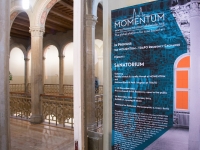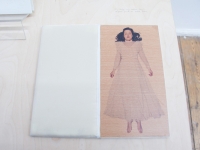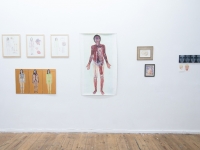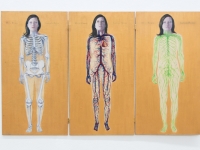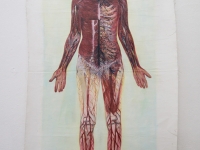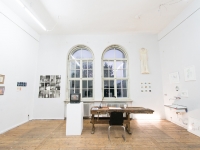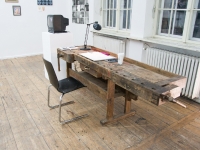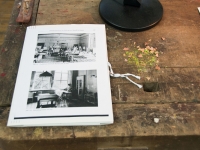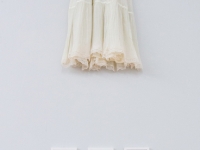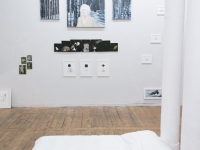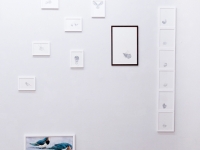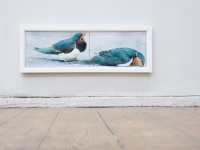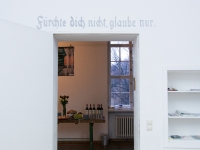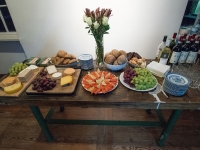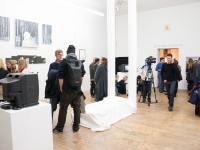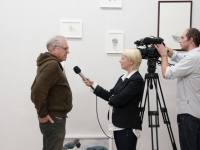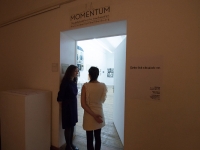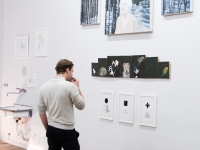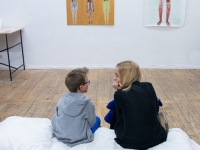IN PROCESS: The MOMENTUM – TRAFO Residency Exchange
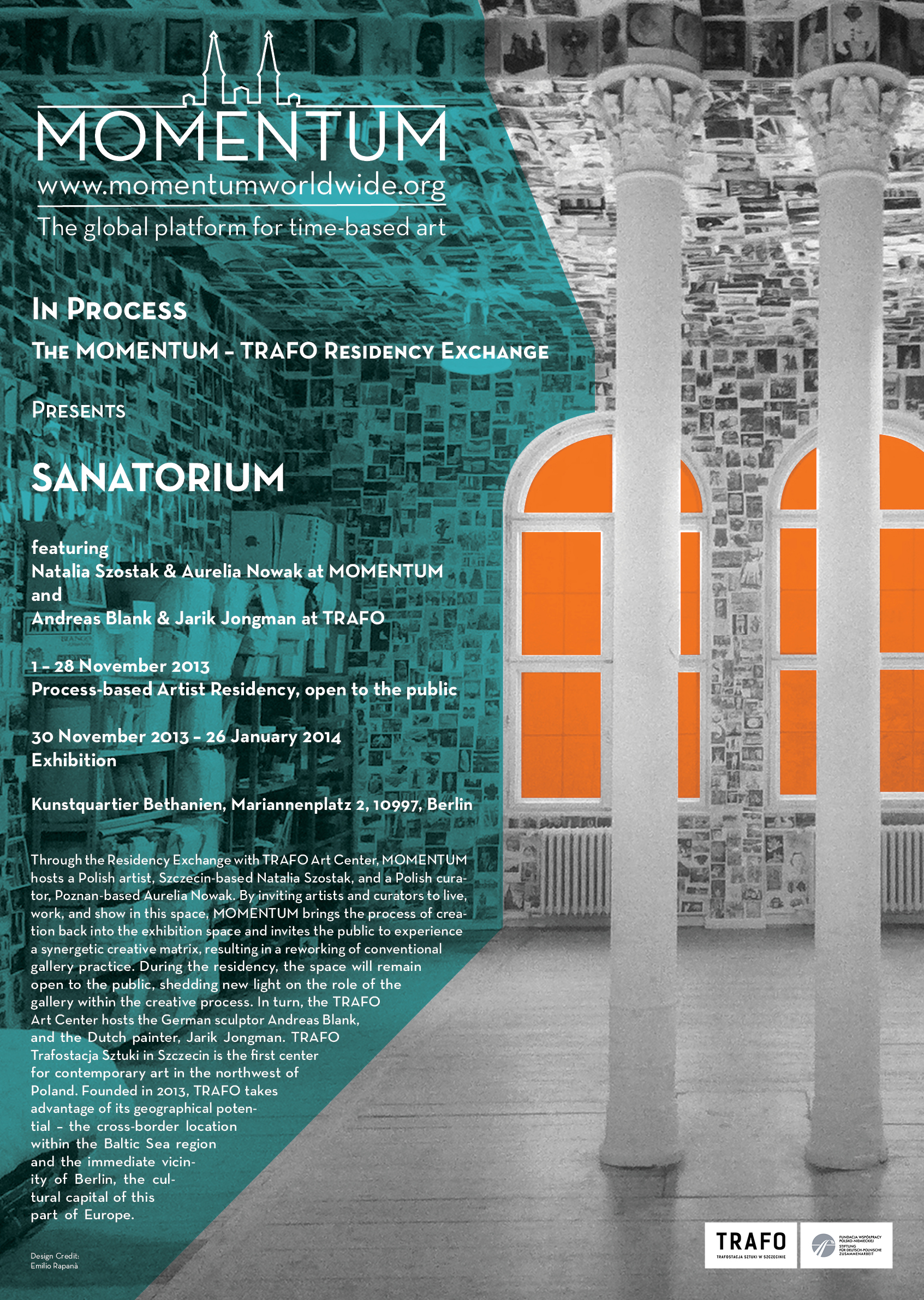
Featuring
Natalia Szostak and Aurelia Nowak at MOMENTUM
and
Andreas Blank and Jarik Jongman at TRAFO
1 November 2013 – 26 January 2014
Curated by Rachel Rits-Volloch and Constanze Kleiner
MOMENTUM Berlin: Nov 16-17, 20, 24 – 13:00-19:00 / Open Studio
MOMENTUM Berlin: Nov 24 – 17:00-22:00 / Polish Film Program (The Hourglass Sanatorium)
MOMENTUM Berlin: Nov 30 – ‘SANATORIUM’/ Exhibition Opening
16:00 – press preview
18:00 – official opening
Polish Cultural Institute Berlin: Dec 5 – 19:00 / Artist Talk
with Andreas Blank, Jarik Jongman, Aurelia Nowak, Natalia Szostak
TRAFO Szczecin : Dec 15 – ‘THRESHOLDS | TRAFO’/ Exhibition Opening
17:00 – press conference
18:00 – curators talk: Vera Baksa-Soos, David Elliott, Constanze Kleiner, Rachel Rits-Volloch, David Szauder
19:00 – official opening
19:15 – sound perforance on occasion of opening
20:00 – performance by TRAFO artist in residence, Jarik Jongman
MOMENTUM Berlin: Jan 6 – 19:00 / Kunst Salon (by invitation only)
In November – December 2013, MOMENTUM inaugurates its process-based residency program, in collaboration with TRAFO Art Center, Szczecin. The Residency reactivates the MOMENTUM gallery space as a living studio. Located in the Kunstquartier Bethanien, the gallery space was formerly the site of one of Berlin’s most exceptional international artist residencies, the Kunstlerhaus Bethanien. Originally a hospital built in the mid-19th century, the building was repurposed as artists’ quarters in 1973, with exhibition spaces, studios and project spaces – remaining an active art center to this day.
Through the Residency Exchange with TRAFO Art Center, MOMENTUM hosts a Polish artist, Szczecin-based Natalia Szostak, and a Polish curator, Poznan-based Aurelia Nowak. By inviting artists and curators to live, work, and show in this space, MOMENTUM brings the process of creation back into the exhibition space and invites the public to experience a synergetic creative matrix, resulting in a reworking of conventional gallery practice. During the residency, the space will remain open to the public, shedding new light on the role of the gallery within the creative process.
In turn, the TRAFO Art Center hosts the German sculptor Andreas Blank, and the Dutch painter, Jarik Jongman. TRAFO Trafostacja Sztuki in Szczecin is the first center for contemporary art in the northwest of Poland. Founded in 2013, TRAFO takes advantage of its geographical potential – the cross-border location within the Baltic Sea region and the immediate vicinity of Berlin, the cultural capital of this part of Europe. TRAFO was founded in an exceptional moment in the history of Szczecin, when the city is in the process of establishing its identity as a new artistic and cultural center. It acts as a bridge between the art scene of Szczecin and its neighboring city Berlin, the emerging global art capital, and the surrounding regions. TRAFO works with contemporary artists to take an active part in the process of forming a new, experimental aesthetic quality. The center features and promotes contemporary artists, organizes activities in the fields of education, publishing, international cooperation and exchange, including the Artist Residency exchange with MOMENTUM Berlin. TRAFO’s Artist-in-Residence program provides an unconventional space for artists where they can live and work, at the same time offering visitors an opportunity to observe the creative process.
Process-based residencies, by allowing access to an artist’s creative process, act to reveal the apparatus of production behind the final product. As such, they contribute to the demystification of the art object and allow insights into the creative process, from conception to the many stages of execution. Process-based residencies are an instantiation of what John Baldessari termed “Post-Studio Art”. He encouraged students to “stop daubing away at canvases or chipping away at stone” and embrace a wider framework for art production, and to thus question traditional modes of production, distribution and reception of art. Following the tennets of artists as diverse as Murakami Saburo of the Gutai Group, and Theaster Gates at Documenta 13, the MOMENTUM residency brings to life the idea that the role of process is as important to artistic creation as the final result, and the process of creation can become an artwork in itself.
By reinventing the gallery and museum space as process-based residency, MOMENTUM and TRAFO alike aim to collapse the boundaries and rules that govern the art world institutions of the studio, the gallery and the residency. It thus reexamines the roles of the artist, the gallery and the visitor in turn, with each role taking on some of the traditional functions of the others. The artist takes on the mantle of the gallerist and museum assistant, guiding visitors through their work in progress, and engaging them in conversation on the art on view. The artist’s role thus is rendered performative, and the artist is forced to consider their work from the perspective of an outsider. The visitor, in turn, is co-opted as collaborator: by contributing to the conversation surrounding the creation of a new piece and by giving input, are they changing the piece as it is being made? Thus a closed work of art becomes, in Joseph Beuys’ terms, a social sculpture, reflecting the actions of the visitors as much as the intentions of the artist. The gallerist must, in turn, give up the strict control engendered by the gallery environment. In a traditional white cube space, control over the modes of display of the artwork is paramount, with the supposedly neutral space placing the artwork centre-stage. When a gallery is given over to a process-based residency, it remains a public space, accessible to visitors during opening hours. It loses the claim to neutrality however, and is forced to surrender itself to the artist’s environment. A process-based residency thus offers artists the opportunity to explore the boundaries established by traditional studio and gallery practice, and to thereby engage with a novel mode of display and production. It offers visitors a level of insight and input into the creative process, while moving away from the popular mythology of the artist’s studio as a specific site of production, as opposed to consumption, of the artwork.
This Residency, in partnership with TRAFO Trafostacja Sztuki in Szczecin, is made possible through the generous support of the Foundation for German-Polish Cooperation. The project is curated by Constanze Kleiner and Rachel Rits-Volloch.
The Foundation For German-Polish Cooperation supports friendly relations between the Poles and the Germans. For the last 20 years, the Foundation for Polish-German Cooperation has co-financed over 10 000 bilateral projects, thereby contributing to the foundations of Polish-German dialogue. The main goal of the Foundation is the support of valuable Polish-German cooperation. The Foundation in particular supports partnerships between Polish and German institutions, educational projects that propagate knowledge of Poland and Germany and of the Polish and German languages, scientific cooperation, and artistic and literary projects.
OPENING VIDEO:
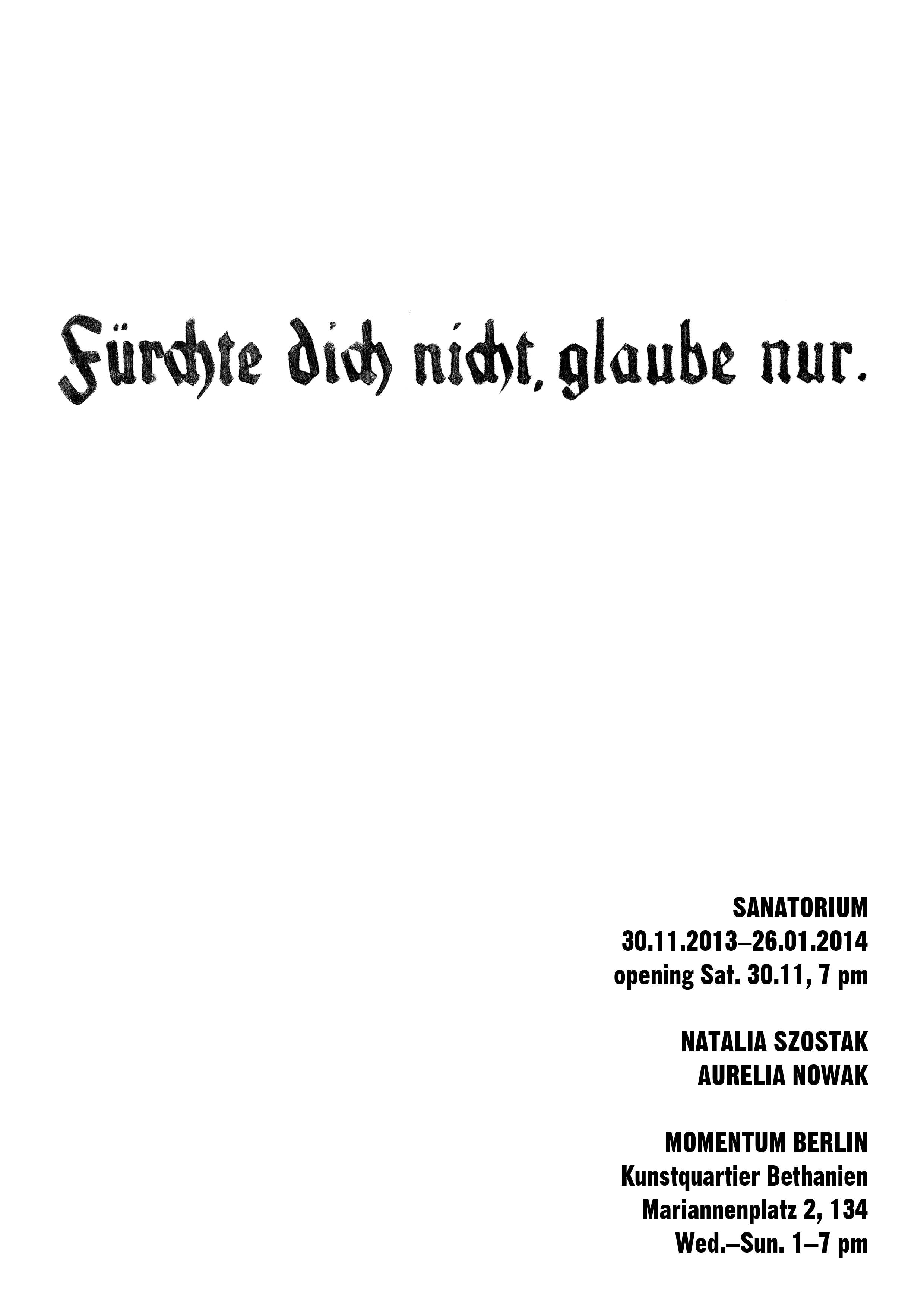
SANATORIUM is the result of a Process-Based Residency during which Szczecin-based artist Natalia Szostak has been living and working in the MOMENTUM space in the Kunstquartier Bethanien. Working together with Polish curator Aurelia Nowak, Szostak creates new work in response to her immersion in this former church-run hospital. Surrounded by the family of Szostak’s earlier work brought into this new context, the artist and curator conceive of this Process-Based Residency in the tradition of the sanatorium – a retreat wherein they have time to focus and develop their work. Working across a variety of media, and drawing on autobiographical motifs of personal memory and family history, Szostak’s richly textured works give us an insight into a strong character sheltering a delicate sensibility. Szostak’s visual language expresses a soul well beyond her years, rooted in a cultural tradition somehow unchanged by her international education and work experience.
 |
PROCESS-BASED RESIDENCY VIDEO:
FEATURING:
AURELIA NOWAK
Aurelia Nowak (1987, Poland) is an organizer of art events and independent curator of exhibitions based in Poznan (PL) and Berlin (DE). She has contributed to art magazines: Magazyn Sztuki and Magazyn Szum. She has also published in daily press Gazeta Wyborcza and other art magazines such as Exit, E-splot and Przeglad Anarchistyczny. From 2009 to 2010 she was a member of the curatorial team of Przychodnia Gallery (Poznań). In 2012 she received a scholarship from the Ministry of Culture and Heritage, as well as the Award for achievements in art field from Ministry of Culture and Heritage. She has also received the Artistic Scholarship from the President of Poznan. Recently she is a participant of the Gallerist Programme run by De Appel Arts Centre in Amsterdam. As Curator-In-Residence at MOMENTUM, Nowak will be responsible for developing the conceptual framework for the process-based residency, in addition to curating the residency exhibition at MOMENTUM, as well as organising related talks, workshops, and events for the public with all four artists. Nowak’s contribution to this process-based residency will ensure that it serves as an active exchange between two institutions and across several cultures, providing both the artists and their audiences with the opportunity to engage with and think through the processes of art practice, and the roles of the institutions which support it.
Natalia Szostak was born in 1980 in Szczecin, Poland. At age 19 she left Poland and lived in Paris (1999-‐2001), San Francisco (2001-‐2007), and Brooklyn, New York (2007-‐2009). Currently she lives and works in Szczecin. Natalia Szostak is a visual artist working in both traditional and new media. The non-material dimension of art and its unique communicative impact are central areas of her interest. She received a BA in painting from San Francisco State University and an MA in graphic arts from the Szczecin Academy of Art. Winner of the 2009 Emerging Artist Special Award at the International Art Competition held by X-‐Power Gallery in Los Angeles. Two-time recipient of the Artist Scholarship of the City of Szczecin. She is the founder of the independent project Platerøwka, whose main objective is to promote art outside the traditional gallery and museum structure. Her work has been shown in various institutions in Poland, Czech Republic, Germany, Belgium, UK, the US, Israel and Lithuania. Szostak’s work relates to personal mythology, the body and the idea of sacrum. As Artist-In-Residence at MOMENTUM, Natalia Szostak will show a selection of her body of work in the site-specific context of MOMENTUM, located in the Bethanian, which was originally built as a hospital administered by the church. During the course of the Residency, in dialogue with her earlier works, Szostak will create new work within and about this historic space, host to over a hundred years of faith, healing, and death.
 |
 |
A former assistant of Anselm Kiefer, Jarik Jongman uses both his own photographs and anonymous pictures found in flea markets, books, magazines and the internet as a starting point for his work, which often deals with archetypical imagery. Dutch born, he studied in Arnhem and has had numerous exhibitions in London, Berlin, Switzerland, Amsterdam and at the 53rd (2009) and 54th Venice Biennale in collateral events. He lives and works in Amsterdam. Jongman will expand his series of painted portraits of icons of the contemporary art world. Originally developed for the ABOUT FACE exhibition at MOMENTUM in 2012, Jongman has applied traditional oil painting to an interactive performative practice. Painting some of the richest and most influential art-world players of our time, he subsequently invokes the audience to break all the taboos of the relationship between audience and artwork. Giving the audience the tools to leave their mark on the paintings, Jongman encourages the purest form of iconoclasm in the context of the sacred space of the museum. The result is a series of mutilated images, reminiscent of the damaged murals and toppled statues of ousted dictators across the world. This series of work has so far been enacted in Berlin, Jerusalem, and London, with portraits of icons of the art world site specific to each location. For his Artist Residency at TRAFO, Jongman will show the results of the previous performances, in addition to creating five new portraits of icons of the Polish art scene. The subjects of these portraits will be selected through an open call, involving the audiences of Szczecin in the process of art production; in the very first stages of choosing a subject, and in the last step in putting their own signatures on the finished work.
 |
Andreas Blank was born in Ansbach in 1976. He attended the Karlsruhe State Academy of Art (Staatliche Akademie der Bildenden Künste) and was Meisterschüler under Prof. Klingelhöller. He held a scholarship with the German National Academic Foundation and received his MFA from the Royal College of Art in London. In 2009 he was a finalist for the New Sensations Award by Channel 4 and the Saatchi Gallery. Blank lives and works in Berlin. Andreas Blank‘s stone encarved trompe l’oeils seem casual at first sight. However, his arrangements are precisely staged and after closer inspection, one discovers that light bulbs, transport boxes and plastic bags are made of marble, alabaster or sand stone. In his sculptural practice, Andreas Blank combines the abstract and the realistic, the conceptual as well as the technical. He sources stones from quarries from all over the world, carves them with elaborate deliberation and assembles them in sometimes consciously stylized, and other times deceptively realistic objects of the everyday. In his precise installations, the apparently ephemeral objects achieve monumental permanence. Whether marble, alabaster, or porphyry, material historically used to serve religious or political functions, has in Blank’s hands acquired a seemingly casual and fragmentary character. The geographical and cultural identity of the stone and the memorial function of stone-sculpture in general refer to the value of each object. Blank questions the obvious and transforms traditional ideals and values on the ordinary and present. As Artist-In-Residence at TRAFO, Blank will show a selection of his previous work, and will make a new sculpture in dialogue with these previous works.
 |
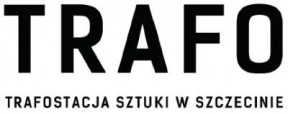




 Back to Homepage
Back to Homepage

